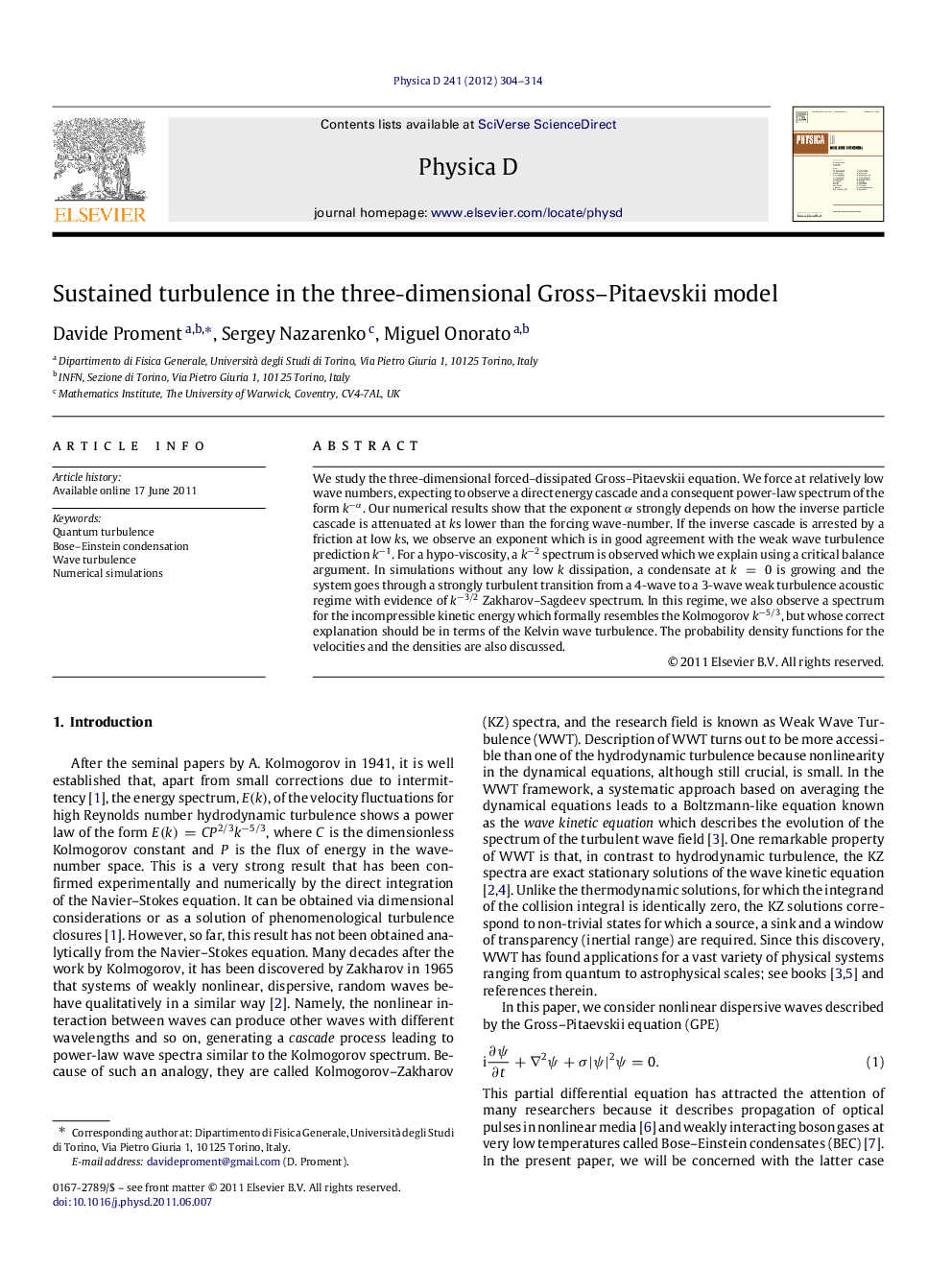| Article ID | Journal | Published Year | Pages | File Type |
|---|---|---|---|---|
| 1897651 | Physica D: Nonlinear Phenomena | 2012 | 11 Pages |
We study the three-dimensional forced–dissipated Gross–Pitaevskii equation. We force at relatively low wave numbers, expecting to observe a direct energy cascade and a consequent power-law spectrum of the form k−αk−α. Our numerical results show that the exponent αα strongly depends on how the inverse particle cascade is attenuated at kks lower than the forcing wave-number. If the inverse cascade is arrested by a friction at low kks, we observe an exponent which is in good agreement with the weak wave turbulence prediction k−1k−1. For a hypo-viscosity, a k−2k−2 spectrum is observed which we explain using a critical balance argument. In simulations without any low kk dissipation, a condensate at k=0k=0 is growing and the system goes through a strongly turbulent transition from a 4-wave to a 3-wave weak turbulence acoustic regime with evidence of k−3/2k−3/2 Zakharov–Sagdeev spectrum. In this regime, we also observe a spectrum for the incompressible kinetic energy which formally resembles the Kolmogorov k−5/3k−5/3, but whose correct explanation should be in terms of the Kelvin wave turbulence. The probability density functions for the velocities and the densities are also discussed.
► We revise quantum turbulence in Bose–Einstein condensates. ► We introduce a forced/dissipated Gross–Pitaevskii model to study steady states. ► We compare theoretical predictions for such states with our numerical simulations. ► The final state strongly depends on the large-scale dissipation term considered.
